ChatGPT Prompt for Job Interview Preparation

Preparing for a job interview can be a nerve-wracking experience. It’s natural to feel a sense of pressure as you try to impress your potential employer and secure the job you’ve been dreaming of. However, with the right preparation, you can increase your chances of acing the interview and landing the job. That’s where ChatGPT comes in. As a powerful language model trained by OpenAI, ChatGPT is equipped with the knowledge and expertise to provide you with valuable insights and prompts to help you prepare for your job interview. In this blog, we’ll explore some of the ways that ChatGPT can assist you in your job interview preparation. Whether you’re …
OpenAI’s Business Case Studies & Use Cases
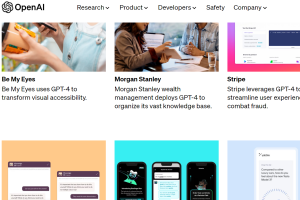
In today’s fast-paced world, businesses are constantly searching for new and innovative ways to stay ahead of the competition and artificial intelligence (AI) is one of the key technology enabler driving innovation and bringing competitive edge. One of the most promising AI technologies in recent years has been generative AI, which has the potential to transform the way companies operate and interact with customers. Among the leading generative AI platforms available today is OpenAI, a pioneer company in the field of generative AI that is dedicated to advancing AI in a safe and beneficial way. In this blog, we will explore OpenAI’s potential case studies and related use cases for …
Convex optimization explained: Concepts & Examples

Prescriptive analytics plays a significant role in helping organizations make informed decisions by recommending the best course of action given a specific situation. Unlike descriptive and predictive analytics, which focus on understanding past data and predicting future outcomes, prescriptive analytics aims to optimize decision-making processes. Optimization solutions are a key component of prescriptive analytics, enabling decision-makers to find the most efficient and effective strategies to achieve their goals. Convex Optimization is a special class of optimization problems that deals with minimizing (or maximizing) convex functions over convex sets. Convex functions and sets exhibit specific mathematical properties that make them particularly well-suited for optimization. In the context of prescriptive analytics, convex …
Why & When to use Eigenvalues & Eigenvectors?

Eigenvalues and eigenvectors are important concepts in linear algebra that have numerous applications in data science. They provide a way to analyze the structure of linear transformations and matrices, and are used extensively in many areas of machine learning, including feature extraction, dimensionality reduction, and clustering. In simple terms, eigenvalues and eigenvectors are the building blocks of linear transformations. Eigenvalues represent the scaling factor by which a vector is transformed when a linear transformation is applied, while eigenvectors represent the directions in which the transformation occurs. In this post, you will learn about why and when you need to use Eigenvalues and Eigenvectors? As a data scientist/machine learning Engineer, one must …
Z-score or Z-statistics: Concepts, Formula & Examples
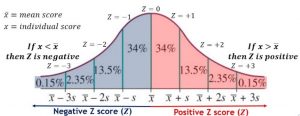
Z-score, also known as the standard score or Z-statistics, is a powerful statistical concept that plays a vital role in the world of data science. It provides a standardized method for comparing data points from different distributions, allowing data scientists to better understand and interpret the relative positioning of individual data points within a dataset. Z-scores represent a statistical technique of measuring the deviation of data from the mean. It is also used with Z-test which is a hypothesis testing statistical technique (one sample Z-test or two samples Z-test). As a data scientist, it is of utmost importance to be well-versed with the z-score formula and its various applications. Having …
Descriptive Statistics – Key Concepts & Examples
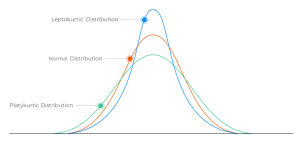
Descriptive statistics is a branch of statistics that deals with the analysis of data. It is concerned with summarizing and describing the characteristics of a dataset. It is one of the most fundamental tool for data scientists to understand the data as they get started working on the dataset. In this blog post, I will cover the key concepts of descriptive statistics, including measures of central tendency, measures of spread and statistical moments. What’s Descriptive Statistics & Why do we need it? Descriptive statistics is used to summarize and describe the characteristics of a dataset in terms of understanding its mean & related measures, spread or dispersion of the data …
Amazon Bedrock to Democratize Generative AI
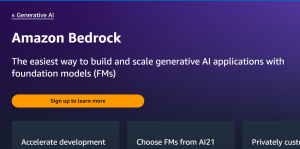
Amazon Web Services (AWS) has announced the launch of Amazon Bedrock and Amazon Titan foundational models (FMs), making it easier for customers to build and scale generative AI applications with foundation models. According to AWS, they received feedback from their select customers that there are a few big things standing in their way today in relation to different AI use cases. First, they need a straightforward way to find and access high-performing FMs that give outstanding results and are best-suited for their purposes. Second, customers want integration into applications to be seamless, without having to manage huge clusters of infrastructure or incur large costs. Finally, customers want it to be …
Backpropagation Algorithm in Neural Network: Examples
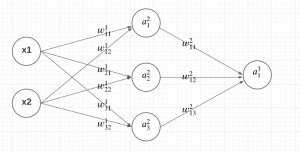
Artificial Neural Networks (ANN) are a powerful machine learning / deep learning technique inspired by the workings of the human brain. Neural networks comprise multiple interconnected nodes or neurons that process and transmit information. They are widely used in various fields such as finance, healthcare, and image processing. One of the most critical components of an ANN is the backpropagation algorithm. Backpropagation algorithm is a supervised learning technique used to adjust the weights of a Neural Network to minimize the difference between the predicted output and the actual output. In this post, you will learn about the concepts of backpropagation algorithm used in training neural network models, along with Python …
SVM RBF Kernel Parameters: Python Examples
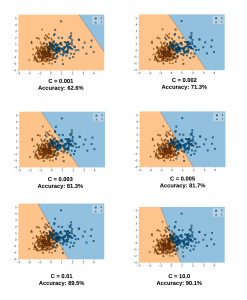
Support vector machines (SVM) are a popular and powerful machine learning technique for classification and regression tasks. SVM models are based on the concept of finding the optimal hyperplane that separates the data into different classes. One of the key features of SVMs is the ability to use different kernel functions to model non-linear relationships between the input variables and the output variable. One such kernel is the radial basis function (RBF) kernel, which is a popular choice for SVMs due to its flexibility and ability to capture complex relationships between the input and output variables. The RBF kernel has two important parameters: gamma and C (also called regularization parameter). …
How to Identify Analytics Use Cases for Solving Business Problems
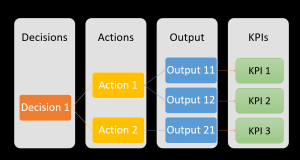
In today’s data-driven world, data analytics has become a key aspect of business decision making. Organizations are increasingly relying on data analytics to gain insights into their operations and customers, in order to drive growth and profitability. However, the challenge for many businesses is not in understanding the importance of analytics, but in identifying the right use cases for their particular business problems, execute those use cases and deliver in a timely manner. This is where a structured approach to identifying analytics use cases becomes critical. In this blog post, we will explore how product managers and data scientists can work with business owners and identify analytics use cases that …
A/B Testing & Data Science Projects: Examples
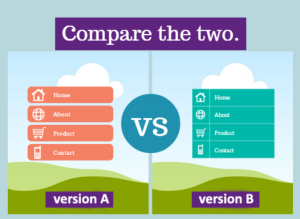
Today, when organization is aiming to become data-driven, it is imperative that their data science and product management teams understand the importance of using A/B testing technique for validating or supporting their decisions. A/B testing is a powerful technique that allows product management and data science teams to test changes to their products or services with a small group of users before implementing them on a larger scale. In data science projects, A/B testing can help measure the impact of machine learning models and the content driven based on the their predictions, and other data-driven changes. This blog explores the principles of A/B testing and its applications in data science. …
Data Science Careers: India’s Job Market & AI Growth

Aspiring data scientists and AI enthusiasts in India have a plethora of opportunities in store, thanks to the country’s booming AI, machine learning (ML), and big data analytics industry. According to a recent report by NASSCOM, India boasts the second-largest talent pool globally in these fields, with a remarkable AI skill penetration score of 3.09 [1]. The nation’s rapid growth in AI talent concentration and scientific publications underscores the immense potential for individuals looking to build a successful data science career in India. As the demand for skilled professionals surges, multiple factors contribute to the thriving industry. The higher-than-average compensation and growth prospects in the field make it an attractive …
Data Analytics Explained: What, Why & How?
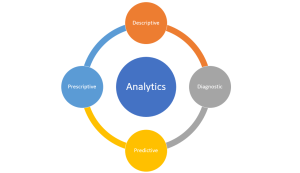
Data analytics has become a buzzword in the business world today, and for all good reasons indeed as it brings competitive advantage to the business if leveraged in the most appropriate manner. The ability to collect, process, and analyze large amounts of data in order to solve business problems has given organizations unprecedented insights into their operations, customers, and markets. By leveraging these insights, businesses can make informed decisions also called as data-driven decisions, identify new opportunities, and drive growth. But what exactly is data analytics? What are the different forms of data analytics? Why is it so important? And how can businesses leverage it to their advantage? How can …
Quiz #86: Large Language Models Concepts

In the ever-evolving field of data science, large language models (LLMs) have become a crucial component in natural language processing (NLP) and AI applications. As a data scientist, keeping up with the latest developments and understanding the core concepts of LLMs can give you a competitive edge, whether you’re working on cutting-edge projects or preparing for job interviews. In this quiz, we have carefully curated a set of questions that cover the essentials of large language models, including their purpose, architecture, types, applications, and more. By attempting this quiz, you’ll not only test your current knowledge but also solidify your understanding of LLM concepts. This will prove valuable when discussing …
Generative AI: Scaling Techniques for LLM Models
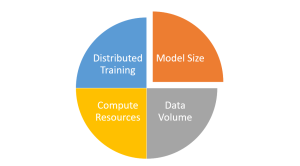
In the rapidly evolving world of artificial intelligence, large language models (LLMs) have emerged as a game-changing force, revolutionizing the way we interact with technology and transforming countless industries. These powerful models can perform a vast array of tasks, from text generation and translation to question-answering and summarization. However, unlocking the full potential of these LLMs requires a deep understanding of how to effectively scale these LLMs, ensuring optimal performance and capabilities. In this blog post, we will delve into the crucial concept of scaling techniques for LLM models and explore why mastering this aspect is essential for anyone working in the AI domain. As the complexity and size of …
Meta Unveils SAM and Massive SA-1B Dataset to Advance Computer Vision Research

Meta Researchers have, yesterday, unveiled a groundbreaking new model, namely Segment Anything Model (SAM), alongside an immense dataset, the Segment Anything Dataset (SA-1B), which together promise to revolutionize the field of computer vision. SAM’s unique architecture and design make it efficient and effective, while the SA-1B dataset provides a powerful resource to fuel future research and applications. The Segment Anything Model is an innovative approach to promptable segmentation that combines an image encoder, a flexible prompt encoder, and a fast mask decoder. Its design allows for real-time, interactive prompting in a web browser on a CPU, opening up new possibilities for computer vision applications. One of the key challenges SAM …
I found it very helpful. However the differences are not too understandable for me